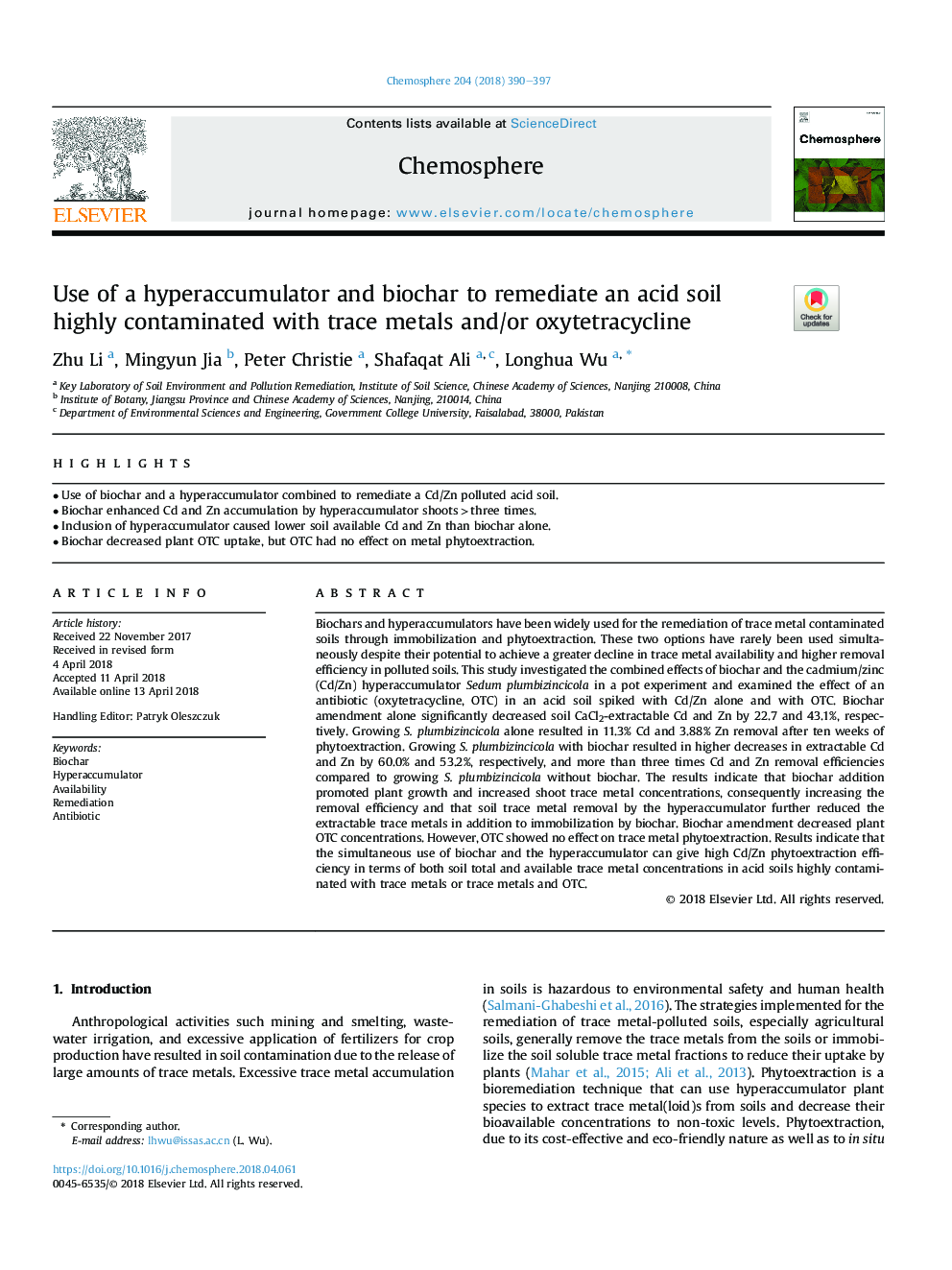| Article ID | Journal | Published Year | Pages | File Type |
|---|---|---|---|---|
| 8851249 | Chemosphere | 2018 | 8 Pages |
Abstract
Biochars and hyperaccumulators have been widely used for the remediation of trace metal contaminated soils through immobilization and phytoextraction. These two options have rarely been used simultaneously despite their potential to achieve a greater decline in trace metal availability and higher removal efficiency in polluted soils. This study investigated the combined effects of biochar and the cadmium/zinc (Cd/Zn) hyperaccumulator Sedum plumbizincicola in a pot experiment and examined the effect of an antibiotic (oxytetracycline, OTC) in an acid soil spiked with Cd/Zn alone and with OTC. Biochar amendment alone significantly decreased soil CaCl2-extractable Cd and Zn by 22.7 and 43.1%, respectively. Growing S. plumbizincicola alone resulted in 11.3% Cd and 3.88% Zn removal after ten weeks of phytoextraction. Growing S. plumbizincicola with biochar resulted in higher decreases in extractable Cd and Zn by 60.0% and 53.2%, respectively, and more than three times Cd and Zn removal efficiencies compared to growing S. plumbizincicola without biochar. The results indicate that biochar addition promoted plant growth and increased shoot trace metal concentrations, consequently increasing the removal efficiency and that soil trace metal removal by the hyperaccumulator further reduced the extractable trace metals in addition to immobilization by biochar. Biochar amendment decreased plant OTC concentrations. However, OTC showed no effect on trace metal phytoextraction. Results indicate that the simultaneous use of biochar and the hyperaccumulator can give high Cd/Zn phytoextraction efficiency in terms of both soil total and available trace metal concentrations in acid soils highly contaminated with trace metals or trace metals and OTC.
Related Topics
Life Sciences
Environmental Science
Environmental Chemistry
Authors
Zhu Li, Mingyun Jia, Peter Christie, Shafaqat Ali, Longhua Wu,
